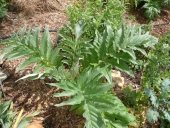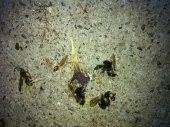I was going to start a new thread to sing the praises of ground elder, but I found this old thread worth reviving. So here it goes:
1) Goutweed/ground elder is a carefree perennial food plant that will grow where few others will; in my case, heavy clay and shade.
2) It is available early in the spring, when little else is growing. Throughout Central and Eastern Europe there are different versions of 'spring soup' that make use of it, in combination with other early greens like nettles, dandelions, and sorrel.
3)According to Stephen Barstow, ground elder has been lactofermented in Siberia. I have not tried this yet myself, but having any perennial food that could last through the winter (in a temperate zone) is a good thing.
4) It is a good source of Vitamin C, iron, and potassium.
Yes, it can be aggressive in the garden, especially in bright or part shade. In my experience it is more restrained in deep shade, and also suffers predation from rabbits and voles. I see it often (the species, not the variegated type) around old farmhouses - likely they knew its usefulness a hundred years ago - but it hasn't overrun local forests. The 'invasive' hysteria surrounding it seems a bit over the top to me.
Here is 'Wildman' Steve Brill talking about it. Sorry for the ugly link, but every time I tried to insert the video, my browser crashed.
https://m.youtube.com/watch?v=ULlxxkZslwo







